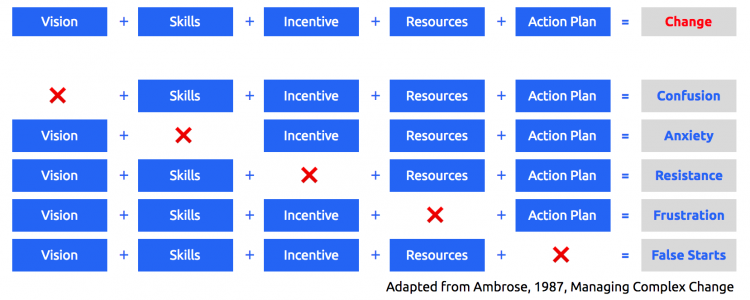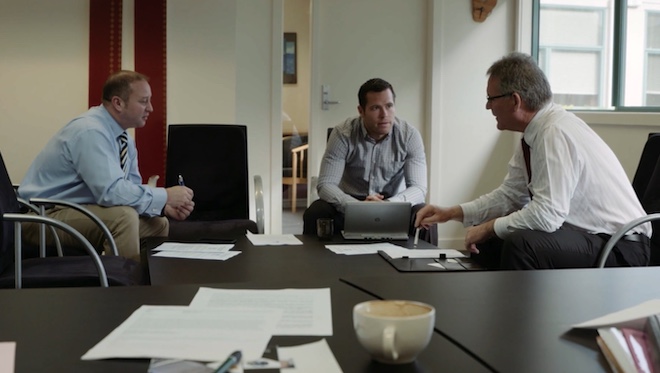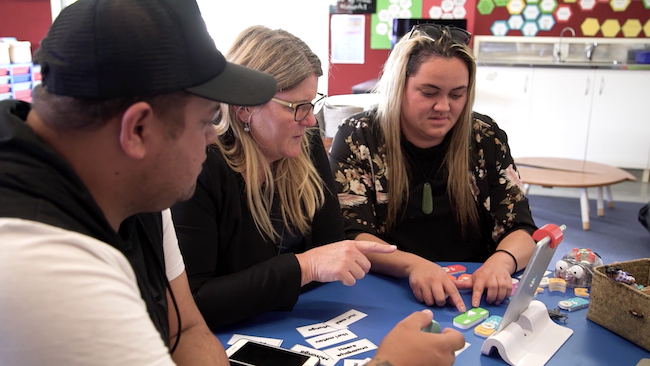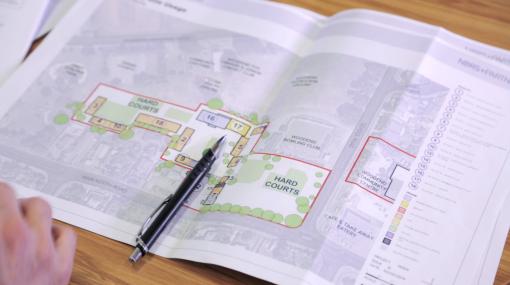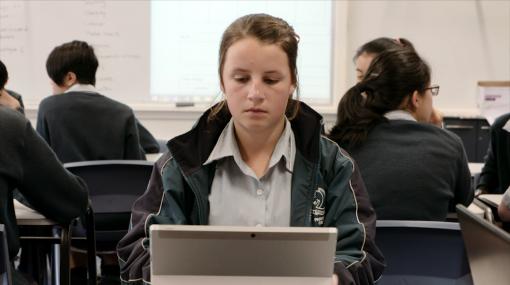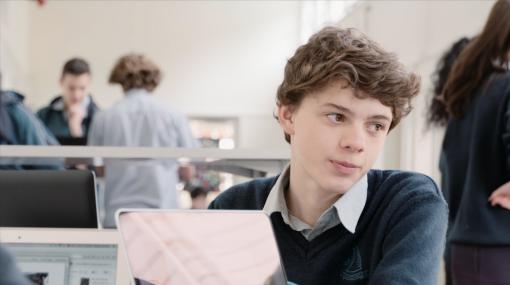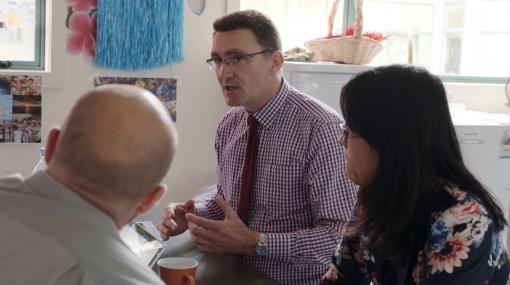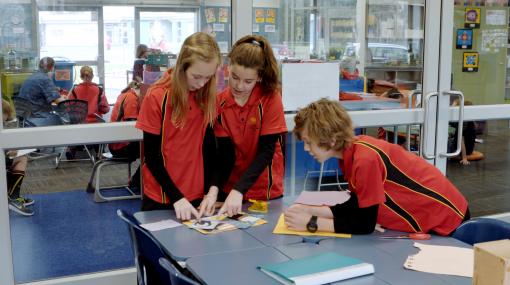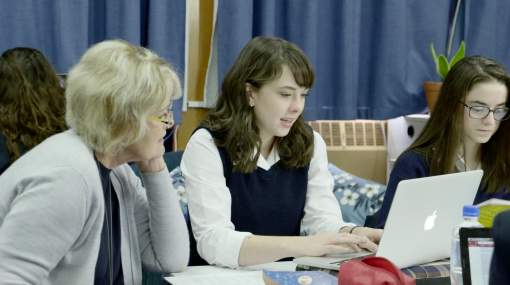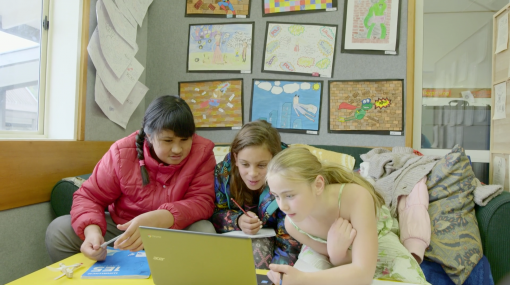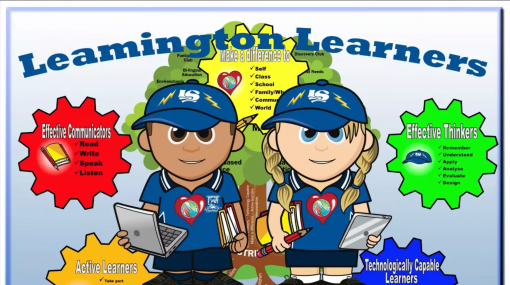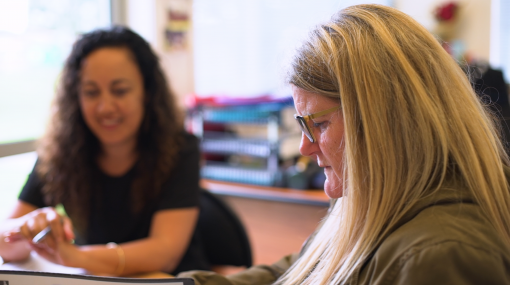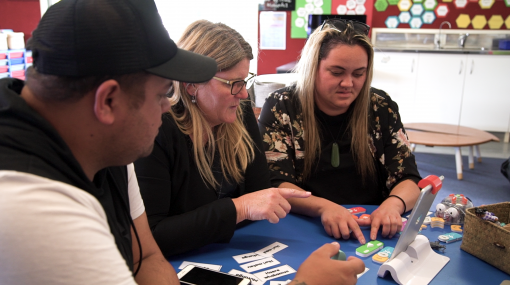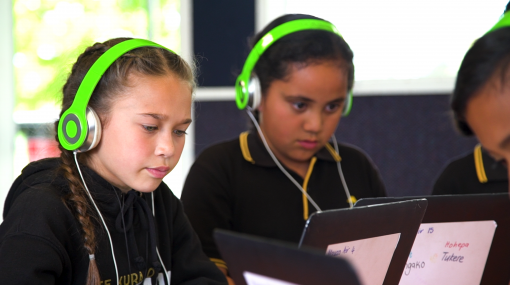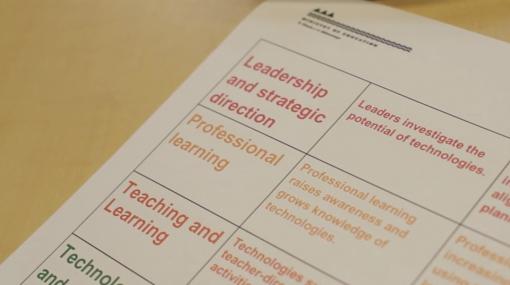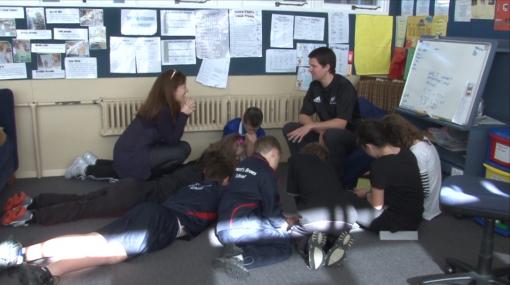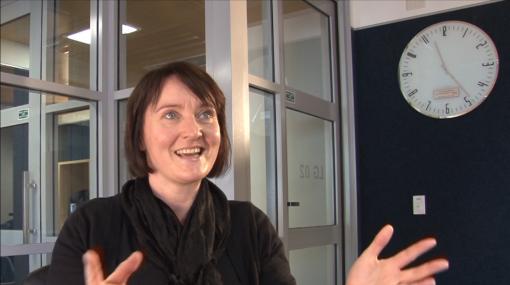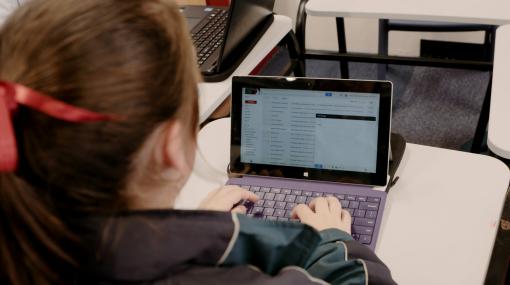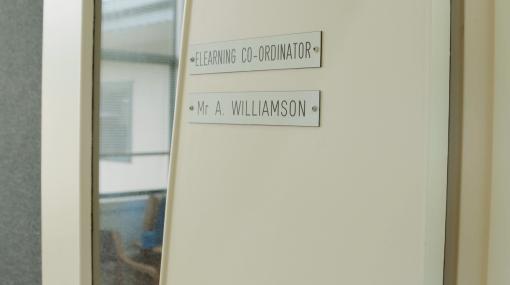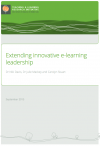Leading e-Learning
“Schools should explore not only how ICT can supplement traditional ways of teaching but also how it can open up new and different ways of learning.”
As principals lead their communities and schools in developing and reviewing their school curriculum, it is essential that there is a clear statement of intent regarding the use of digital technologies to support and transform learning.
Specific leadership strategies fall into the following broad approaches:
- Developing a school-wide understanding of the role and importance of digital technologies to enable successful learning for all students.
- Developing a school vision that prepares students for the future, which is supported by the use of digital technologies.
- Modelling technology use by senior leaders in the school, as well as making sure teachers appreciate and experience new technologies as learners themselves before being expected to use them in classrooms.
- Encouraging teachers to take risks and use technologies in innovative and meaningful ways to improve student learning.
- Making the most of available technology.
Educational consultant, Julia Atkin, discusses the process of leading e-learning in a school. She explains the importance of creating a shared vision, developing a vision that reflects the competencies students need to develop, and the importance of identifying the staff's educational needs to ensure the vision can be put into practice.
"In our school, leadership ensures the whole staff is involved in e-learning strategic planning."
e-Learning Planning Framework
Managing successful change
This diagram shows all the key components involved in managing successful change and the symptoms if one is missing.
"Our school regularly reviews processes and systems for managing e-learning across the curriculum."
Key considerations
Start by establishing a clear structure for leading e-learning
- How do you ensure the learning needs of all your students are being met?
- How is e-learning reflected in your school vision?
- How are you engaging with your school community?
- What systems have you put in place for ongoing professional learning and development?
Practical steps
How e-learning is led in your school should be clearly structured and understood
- Establish a clear structure that shares responsibility for leading e-learning across the school and which involves senior leadership.
- Select key personnel with clear roles and responsibilities for leading and supporting learning with digital technologies – develop e-leaders in your school.
- Support individuals, teams, and whole-school staff development through planned and targeted professional learning opportunities.
- Make sure organisational systems (time, space, infrastructure) are in place for the sustainable leadership of e-learning across the school.
- Provide teachers with time and guidance to inquire into their practice and understand how they can use digital technologies to improve student learning, including a focus on using digital technologies to support learners at risk of not achieving.
- Align reflection and review cycles to teacher learning and appraisal to sustain successful e-learning across your school.
In our school, the staff is actively involved in the review of our vision and rationale for e-learning
More information »
Irene Cooper, principal of Hillcrest Normal School in Hamilton, talks about using the e-Learning Planning Framework as a basis for their strategic planning.
What is strategic planning?
Strategic planning is the systematic process of:
- envisioning a desired future
- translating this vision into broadly defined goals
- determining a sequence of steps to achieve these.
Getting started with strategic planning and e-Learning
Principals and school leaders
- Form a strategy development committee to make sure that the school and community are involved in developing and reviewing the strategic plan for e-learning.
- Identify the strategic gap between where you are now and your vision. Make judgments based on evidence – such as classroom practice, school documentation, audits, and feedback. Create clear, measurable goals (with actions, responsibilities, and timeframes) to move forward.
- Ensure your e-learning strategy aligns with and is embedded in:
- your school charter goals
- annual school-wide strategy
- the policies and practices related to diverse learner needs (Māori, Pasifika, gifted and talented, special needs)
- financial plans – infrastructure, resources, budgets (short term, mid and long term)
- professional learning and development needs
- classroom planning and implementation.
- Establish evidence-based reflection and review processes (aligned with teacher performance and appraisal) to review progress through your e-learning action plan. You should be able to describe the impact on students’ learning and achievement.
Teachers
- Be proactive about being part of the strategic planning process – show commitment, ownership, and contribution.
- Put the strategy into action through careful planning and classroom practice.
- Set your professional e-learning goals so they align with the school’s strategic direction and review them as part of your appraisal.
More information »
- Strategic thinking roadmap - to guide your planning process
- eLearning planning framework - to reflect on, and evaluate your e-learning capability
- Culturally responsive leadership - to support you to foster inclusive environments and improved learning for students and families with culturally and linguistically diverse backgrounds
Forming your e-Leadership team
The size of your school will affect how many e-leaders you will have and whether you create an e-leadership team, which may include your technical support, communications person, and e-mentors, e-coordinators, or e-leaders.
Practical steps in developing e-leaders
- Identify staff members who are excited by/have strengths in using digital technologies to enhance student learning.
- Develop clear roles and responsibilities for leading and supporting learning with digital technologies.
- Support e-leaders with their own professional learning, this may be through sharing across a cluster, Kāhui Ako, or providing them with time for their own research.
“Relationships are essential - the ability to establish and maintain genuine and respectful relationships with staff, students, Board of Trustees, and parents/whānau, as well as wider community and professional groups, is pivotal for innovation, change and productive outcomes”
The ISTE Standards for Education Leaders provide a framework for guiding digital age learning. Use it to explore the knowledge, skills and behaviors to develop as an e-learning leader.
Allister Williamson describes his role as e-Learning coordinator at Pakuranga College, which involves overseeing their professional learning programme. They have systems in place to support teachers with learning to use digital technologies effectively. These include - whole school audits of capability, a system of rubrics to support teachers with next steps for learning, and a professional learning programme based on teacher inquiry supported by e-mentors.
Sandy Bornholdt talks about her role as an e-learning coordinator and explains how she is working with kaiako to incorporate e-learning and STEAM in the classroom at Matapihi School, a full immersion kura. Sandy has enjoyed developing her cultural capability as part of the role. She brings strengths that can support kaiako to realise the potential that digital technologies bring.
Leading teacher PLD
In a continuously evolving digital landscape, the role of the e-leader can be crucial.
By taking a leading role in ongoing professional development an effective e-leader can support deep learning enabled by digital technologies through:
- researching, sharing, and modelling the effective use of digital technologies
- reviewing e-learning strategies from different pedagogical perspectives
- supporting teachers with their inquires
- supporting teachers to take risks
- promoting collaboration between teachers, teams, and school clusters in teacher planning
- supporting teachers with using tools such as the SAMR model to understand how digital technologies can impact on teaching and learning
- increasing digital fluency and confidence, and reducing fear among staff by organising participation in hands-on professional development activities and modelling the use of new and existing technologies
Woodend School Deputy Principal, Adriene Simpson explains how to use the spiral of inquiry as a framework to identify how to move forward with innovative learning practices and learning with digital technologies. She highlights the importance of their e-leaders in this process.
More information »
Achieving e-learning goals
Simply giving students access to digital technologies is not enough to make effective use of digital resources. An effective e-leader supports teachers to and students to collaborate and seek deeper learning outcomes using digital tools and resources.
Goals and actions for leading e-learning should be based on improving student learning outcomes. The table provides examples of goals and actions for e-learning.
| Pedagogical goals for e-learning | Strategies and actions for achieving e-learning goals |
| Develop systems for students to define their own learning goals and seek out the digital tools they need to achieve them, for example:
|
| Provide access to digital tools for students to create and share their learning |
| Use collaborative digital tools |
| Identify how digital technologies can be used to support all students to participate fully in the school curriculum |
| Digital tools can be used by students to collate, display, evaluate, and reflect on their work, as well as take control of their own learning |
More information »
Building and maintaining parent and community relationships
An effective e-leader can build communication with parents and community partners by:
- using social media to engage with parents, whānau, and the community by updating school events on school websites, blogs, Twitter and/or Facebook
- using digital technologies and social media to build a sense of school culture, for example, by encouraging students to promote school values by performing them in dance, filming it, and making the video available on the school website/Facebook page
- maintaining a school YouTube channel that showcases events, student movie-making, and learning
- using social media to increase student voice by allowing them to take control of projects and show them to the community
- using blogs and e-portfolio platforms to place student work online to keep parents connected to their child’s learning
- managing the ethical use of social media in schools by forming a social media policy
- using collaborative tools to help staff work together with other schools, clusters, other institutions, and community groups
- developing policy and systems for digital citizenship and cybersafety.
Teacher, Nicki Fielder and students from Apiti School explain the different social media tools they use to connect with parents and the wider community. These are all housed within a Weebly and have been selected for specific purposes. They include:
- wikis for student e-portfolios
- blogs for sharing student writing
- a school YouTube channel to house all the student-created videos.
More information »
- Engaging with parents, whānau and the community
- Connecting with families and communities of Pacific learners
Videos of New Zealand schools sharing their e-learning leadership. Use the filters to select videos relevant to your situation.
Filter by: Primary Secondary Professional development Community engagement Cluster collaboration e-Leadership
Sorry, no items found.
The framework provides school leaders with:
- a self-review tool for schools to gather evidence about practice
- a road map for building e-learning capability
- a tool to evaluate the effectiveness of e-learning programmes
- resources and services to support schools as they build capability.
Wherever you are in your leadership career, you should find information and ideas that help you to solve day-to-day problems and support your professional learning.
- The future schools and innovation section provides current research and readings on leading and managing change.
- Mentoring and coaching – information and resources to support school leaders with mentoring and coaching by a peer partner.
- Leading learning – resources to support creating a culture of sustained improvement.
- Eight forces for leaders of change – This article from Educational Leaders by Michael Fullan, Claudia Cuttress, and Ann Kilcher, outlines eight forces for managing the change process, and contains suggested topics for discussion and evaluation. This information is useful for those beginning a phase of change. It provides a useful reading to share with staff so that they understand the various stages in the process of implementing change in a school.
The Leadership Strategy for the teaching profession of Aotearoa New Zealand
The Leadership Strategy supports the growth and development of leadership capability for all registered teachers across English medium and Māori medium settings, in positional and non-positional roles. The Strategy sets out a guiding framework for teachers to develop their leadership capability – aiming to make leadership development accessible to everyone.
Author: Education Council NZ
Published: August 2018
The Educational Leadership Capability Framework
The Capability Framework is designed to support the Leadership Strategy to advance educational leadership in Aotearoa New Zealand. It outlines the core educational capabilities needed for effective leadership across different levels of the profession. The Capability Framework provides all teachers with a practical tool to identify, grow, and develop their leadership capability. It illustrates what leadership looks like in practice, in kura, schools, and early childhood education services.
Author: Education Council NZ
Published: August 2018
Leading innovative learning in New Zealand Schools
The Education Review Office (ERO) visited 12 schools to see how they were preparing their students as 21st-century learners.
Extending innovative e-learning leadership
This 2015 study by Niki Davis, Julie Mackey, and Carolyn Stuart gives examples of how schools in New Zealand are using digital technologies to enable e-learning.
OECD (2015), Students, computers and learning: Making the connections, Pisa, OECD publishing
For a broad overview of current international trends in ICT infrastructure, see this OECD report.
The big finding of the BES is that when school leaders promote and/or participate in effective teacher professional learning, this has twice the impact on student outcomes across a school than any other leadership activity. New Zealand principals spend less time on those activities that make the most difference than many of their international peers.
Extending innovative e-learning leadership
In this project, the researchers worked with experienced principals to identify and analyse effective e-learning leadership strategies, and make these visible and accessible for other school leaders.

